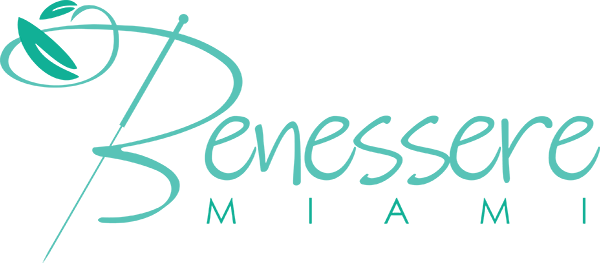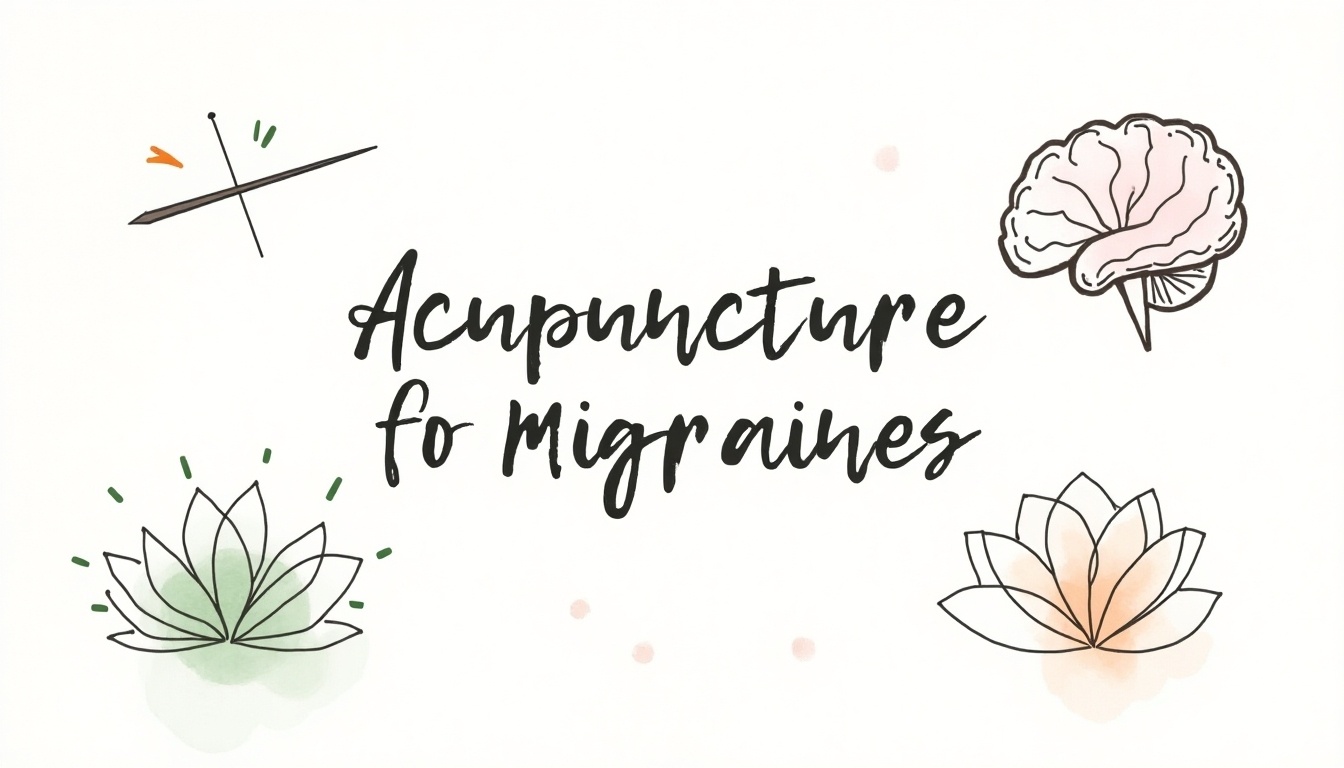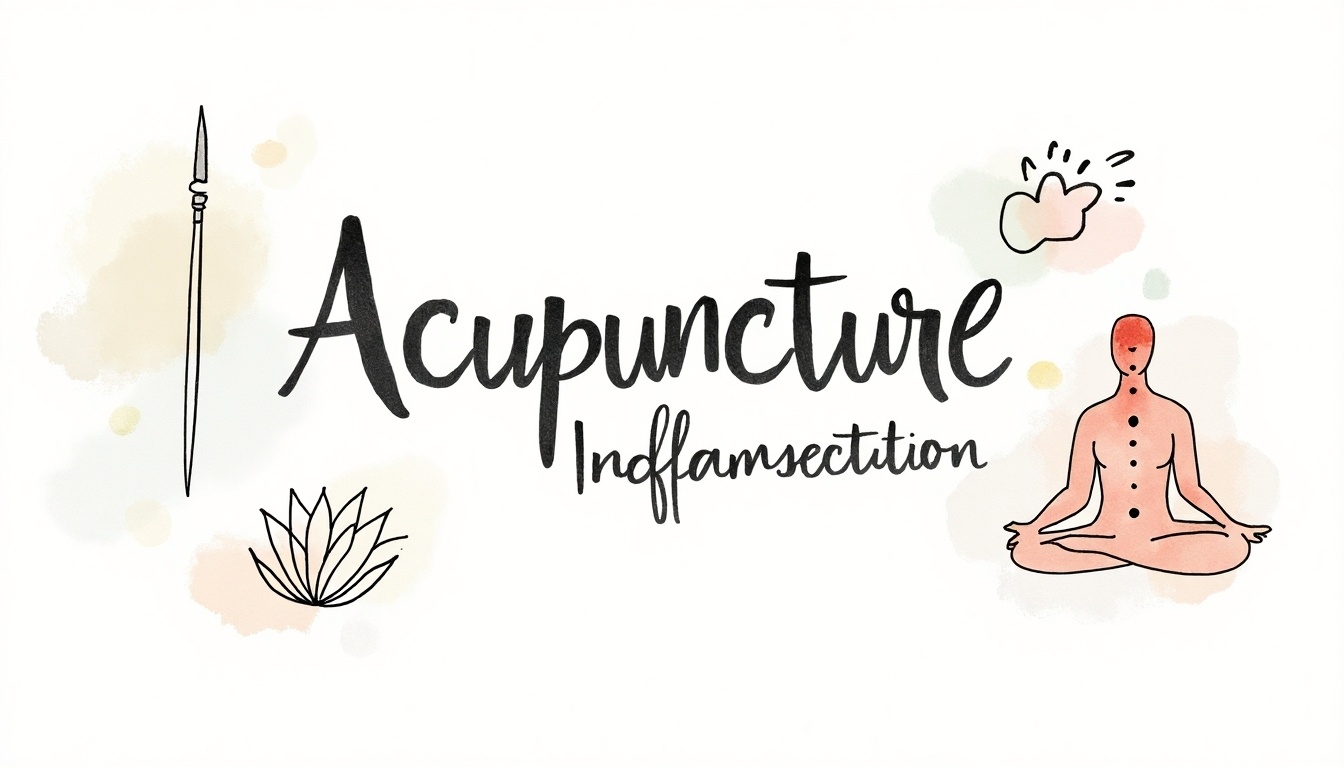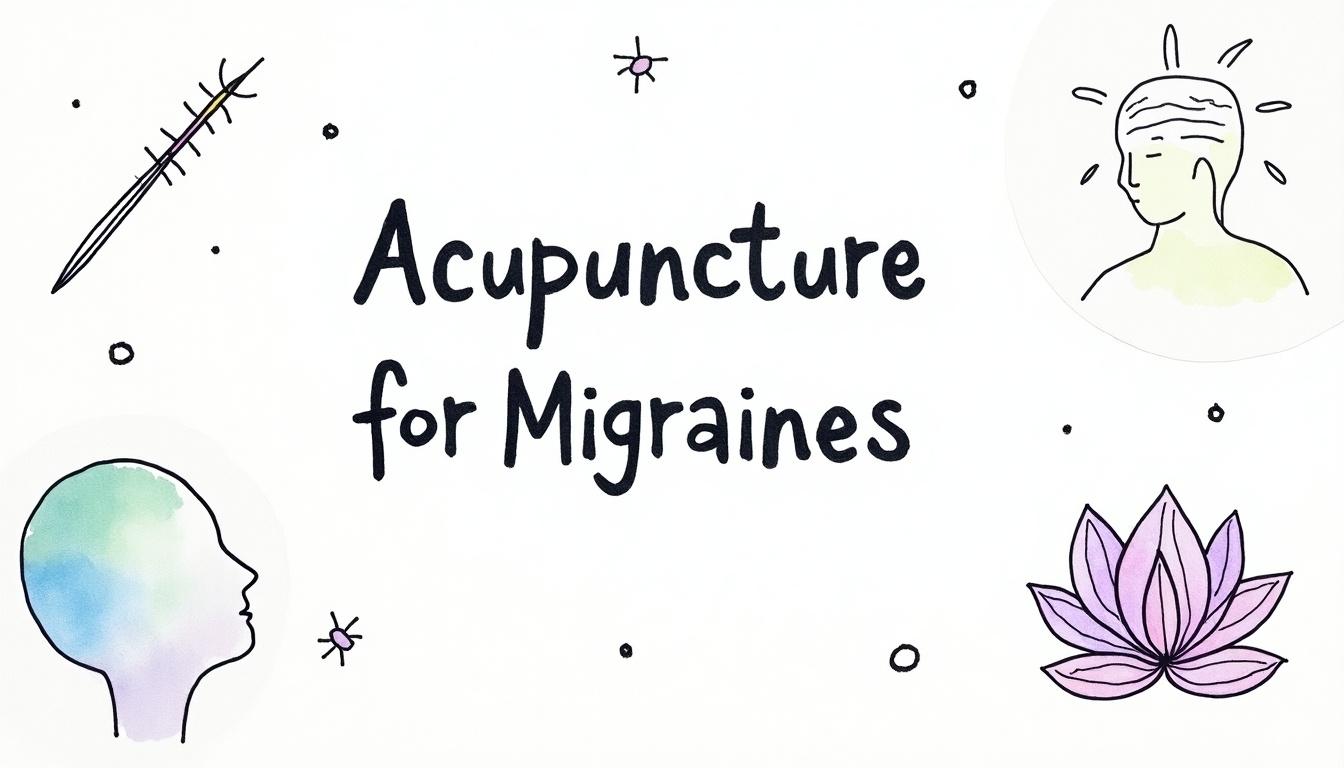Understanding Acupuncture for Migraines
Acupuncture is a traditional Chinese medicine that involves inserting thin needles into specific body points to restore the flow of “Qi” and balance the internal forces of Yin and Yang. Its growing recognition in Western medicine highlights potential benefits for migraine treatment. Research shows acupuncture can reduce both the frequency and duration of migraines, sometimes offering relief comparable to conventional medications with fewer side effects. Patients often report lasting improvements even after their sessions end. While generally safe when performed by licensed practitioners, some may experience minor bruising or soreness. This guide serves as a helpful resource for those curious about acupuncture as a migraine management option.
What is Acupuncture?
Acupuncture is a practice rooted in traditional Chinese medicine (TCM) that involves inserting very thin needles into specific points on the body. These points, known as acupuncture points, are believed to correspond to pathways of energy, or “Qi,” that flow through the body. The goal of acupuncture is to restore balance and promote healing by regulating this vital energy. In recent years, acupuncture has gained recognition in Western medicine as a potential treatment for various conditions, including migraines. By targeting trigger points and stimulating the nervous system, acupuncture seeks to alleviate pain and improve overall well-being.
How Acupuncture Works
Acupuncture works by stimulating specific points on the body, often referred to as acupuncture points or meridians. These points correspond to pathways in the body that allow the flow of “Qi” or vital energy. When needles are inserted into these points, they can help restore balance and promote healing.
The process is thought to activate the nervous system, which can lead to the release of neurotransmitters, including endorphins. These natural chemicals can help alleviate pain and promote a sense of well-being. Furthermore, acupuncture may improve blood circulation in the areas treated, which can help reduce inflammation and enhance recovery.
For example, individuals suffering from migraines may find that acupuncture focuses on points located on the head, neck, and arms. By addressing these areas, practitioners aim to relieve tension and blockages that could contribute to migraine onset. This holistic approach not only targets the symptoms but also seeks to address underlying issues affecting the body as a whole.
Research on Acupuncture for Migraines
Numerous studies have investigated the effectiveness of acupuncture for migraine treatment, yielding promising results. A systematic review published in the Cochrane Database highlighted that acupuncture can significantly reduce the frequency and intensity of migraine attacks. For instance, one trial found that patients receiving acupuncture experienced a 50% reduction in migraine days compared to those receiving standard care. Other research indicates that acupuncture is not only effective but can also provide relief comparable to that of conventional medications like triptans, without the associated side effects. In terms of long-term benefits, patients often report sustained relief even after completing their treatment sessions, suggesting that acupuncture may help reset the body’s pain response. Additionally, some studies have shown that acupuncture can improve the overall quality of life for migraine sufferers, making it a valuable option for those seeking alternatives to pharmacological treatments.
Benefits of Acupuncture

Acupuncture offers several benefits for those suffering from migraines, making it an appealing option for many patients. One of the primary advantages is its ability to reduce the frequency and intensity of migraine attacks. Studies have shown that individuals who receive acupuncture treatments experience fewer migraine days, which can significantly improve their quality of life.
Another important benefit is the lower incidence of side effects compared to conventional migraine medications. While many drugs can cause unwanted effects like drowsiness, nausea, or gastrointestinal issues, acupuncture typically leads to minimal discomfort, such as minor bruising or soreness at the needle insertion points.
Moreover, acupuncture is known for providing long-term relief. Many patients report sustained improvements in their symptoms even after completing a series of sessions. This can be particularly valuable for individuals seeking a non-pharmacological approach to managing their migraines.
Additionally, acupuncture can help in reducing reliance on pain medications. By promoting the body’s natural pain-relieving mechanisms, patients may find they need fewer over-the-counter or prescription drugs, leading to better overall health and fewer medication-related issues.
For those who have not found relief through traditional therapies, acupuncture presents a holistic alternative, addressing not only the physical symptoms but also the emotional and stress-related aspects of migraine conditions.
- Reduces frequency and severity of migraines
- Promotes relaxation and stress relief
- Increases endorphin production
- Improves overall well-being
- Enhances blood circulation
- Supports immune function
- Provides a holistic approach to pain management
Safety of Acupuncture
Acupuncture is generally considered a safe treatment option for migraines when performed by a trained and licensed practitioner. The risk of serious complications is very low. Most patients experience only minor side effects, such as slight bruising or soreness at the needle insertion sites. These effects usually resolve quickly and do not require medical intervention. It is important to ensure that the practitioner uses sterile, single-use needles, which are regulated by the FDA to maintain safety standards. In rare cases, improper techniques or unqualified practitioners could lead to more severe side effects, such as infections or injury to underlying structures. Therefore, choosing a qualified acupuncturist is crucial for both safety and effectiveness.
Acupuncture Treatment Plans
Acupuncture treatment plans for migraines are tailored to individual needs and often involve several key components. Typically, practitioners recommend a series of sessions, usually between 6 to 8, to achieve optimal results. The frequency of these sessions may vary; initial visits might occur weekly, while follow-up treatments could be spaced out as symptoms improve.
Before starting treatment, a thorough evaluation is conducted to assess the patient’s medical history and specific migraine patterns. This helps the practitioner identify the most effective acupuncture points to target. For example, certain points on the head and hands may be more beneficial for someone experiencing severe migraines, while others might be chosen for tension-type headaches.
In addition to the acupuncture sessions, some practitioners may integrate complementary therapies, such as herbal medicine or dietary recommendations, to enhance the overall treatment effectiveness. This holistic approach aims to address not just the migraine symptoms but also underlying factors contributing to their occurrence.
Tracking progress is crucial; patients are often encouraged to maintain a headache diary to document the frequency, intensity, and duration of migraines. This information can help adjust the treatment plan as needed, ensuring that it remains effective over time. It’s important for patients to communicate openly with their acupuncturist, discussing any changes in their condition or lifestyle that may affect their treatment.
Acupuncture vs. Conventional Treatments
Acupuncture offers a unique approach to migraine management compared to conventional treatments. While traditional medications like triptans and beta-blockers target migraine symptoms directly, acupuncture focuses on restoring balance and promoting the body’s natural healing processes. Studies suggest that acupuncture can be as effective as these medications in reducing the frequency and intensity of migraines, often with fewer side effects. For instance, where triptans may cause nausea or dizziness, acupuncture’s side effects are generally limited to minor bruising or soreness at the needle sites.
Moreover, acupuncture may serve as a complementary treatment for those who find conventional medications ineffective or intolerable. Many patients experience a notable reduction in their reliance on pharmacological treatments after undergoing acupuncture therapy. This holistic method not only addresses the physical symptoms but also considers emotional and lifestyle factors that may contribute to migraines, such as stress and anxiety.
In practice, individuals might find that acupuncture sessions help them manage their migraines more effectively over time, leading to a significant improvement in their overall quality of life. This integrated approach can make acupuncture a valuable alternative or adjunct to conventional migraine treatments.
Further Research and Studies
Recent studies continue to explore the efficacy of acupuncture in treating migraines. For instance, a randomized controlled trial published in a leading medical journal found that patients receiving acupuncture reported a significant decrease in the frequency of migraine attacks compared to those receiving standard care. In another study, acupuncture demonstrated a 50% reduction in migraine days for 30% of participants, showcasing its potential as a viable treatment option.
Moreover, ongoing research is delving into the long-term effects of acupuncture on migraine management. A longitudinal study is investigating whether patients who benefit from acupuncture sessions can maintain improved migraine frequency and intensity over extended periods. These studies aim to provide a clearer understanding of how acupuncture not only alleviates immediate symptoms but also fosters lasting change in migraine patterns.
The integration of acupuncture with other treatment modalities is also being examined. Some researchers are assessing the combined effects of acupuncture and pharmacological treatments, hypothesizing that acupuncture may enhance the overall effectiveness of medications while potentially allowing for lower doses.
In summary, the body of research surrounding acupuncture for migraines is expanding, with promising findings suggesting that it could serve as a powerful tool in the comprehensive management of this debilitating condition.
Frequently Asked Questions
1. How does acupuncture help with migraines?
Acupuncture may help reduce migraine symptoms by stimulating specific points on the body to improve blood flow, relieve tension, and release endorphins, which can help minimize pain.
2. Is acupuncture safe for everyone with migraines?
While acupuncture is generally safe, it may not be suitable for everyone. It’s important to consult with a healthcare provider before starting acupuncture, especially if you have certain health conditions or are pregnant.
3. What should I expect during an acupuncture session for migraines?
During an acupuncture session, you’ll lie down comfortably while the acupuncturist gently inserts thin needles at targeted points. You may feel a slight pinch, but it shouldn’t be painful. The session typically lasts about 30 to 60 minutes.
4. How many acupuncture sessions are usually needed for migraine relief?
The number of sessions needed can vary based on the individual and the severity of their migraines. Many people find relief after a few sessions, while some may need ongoing treatments for best results.
5. Can acupuncture be used alongside other migraine treatments?
Yes, acupuncture can be used alongside other treatments like medication or lifestyle changes. It’s essential to discuss all your treatment options with your healthcare provider to ensure a coordinated approach.
Takeaway (TL;DR)
Acupuncture, a traditional Chinese medicine technique, involves inserting thin needles to restore the flow of energy and has shown promise in reducing the frequency and intensity of migraines. Research indicates it can be as effective as conventional medications with fewer side effects. Generally safe when performed by licensed practitioners, acupuncture may be a beneficial option for patients seeking alternatives to pharmaceutical treatments.
 English
English  Spanish
Spanish  Portuguese
Portuguese 




